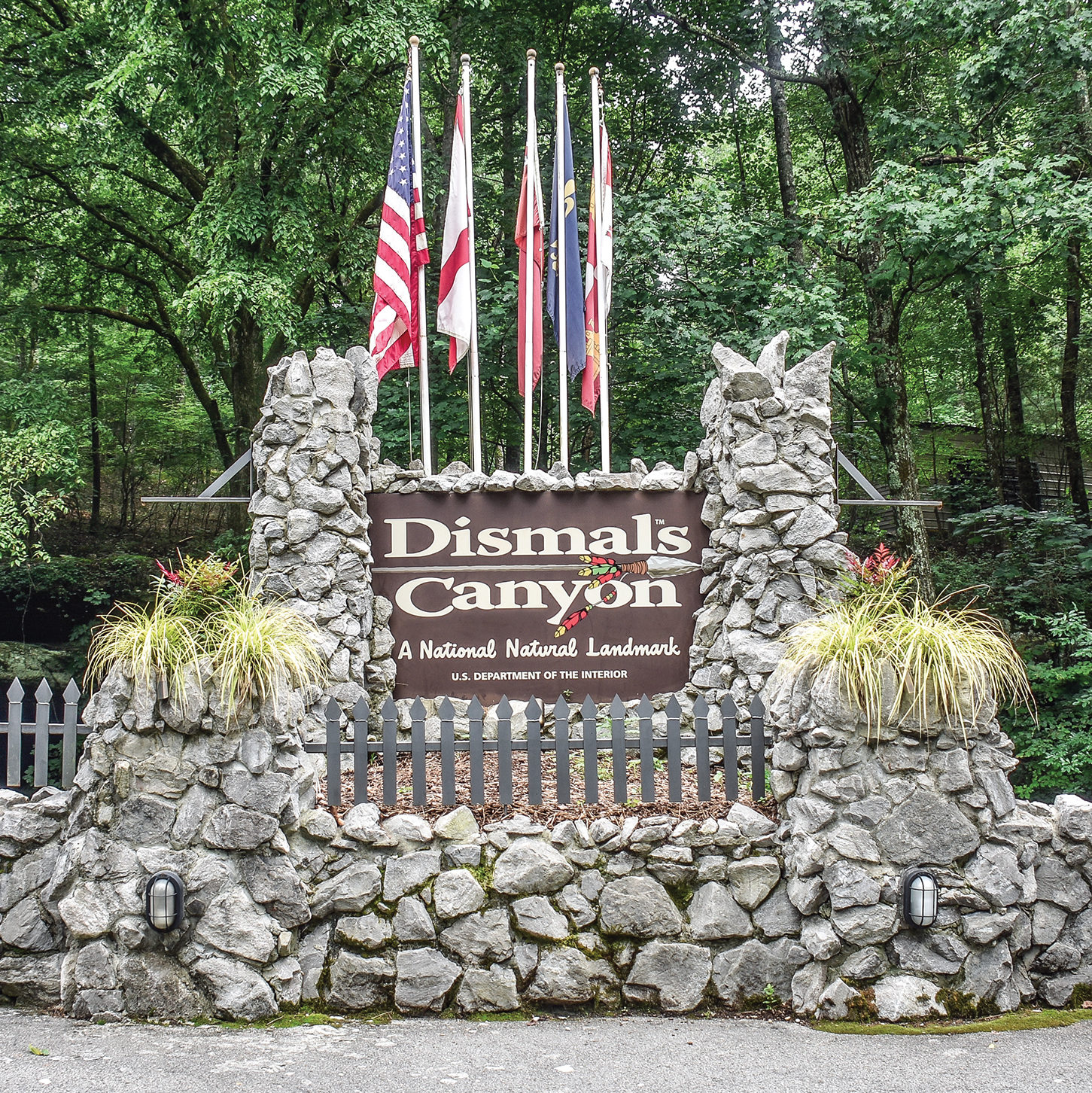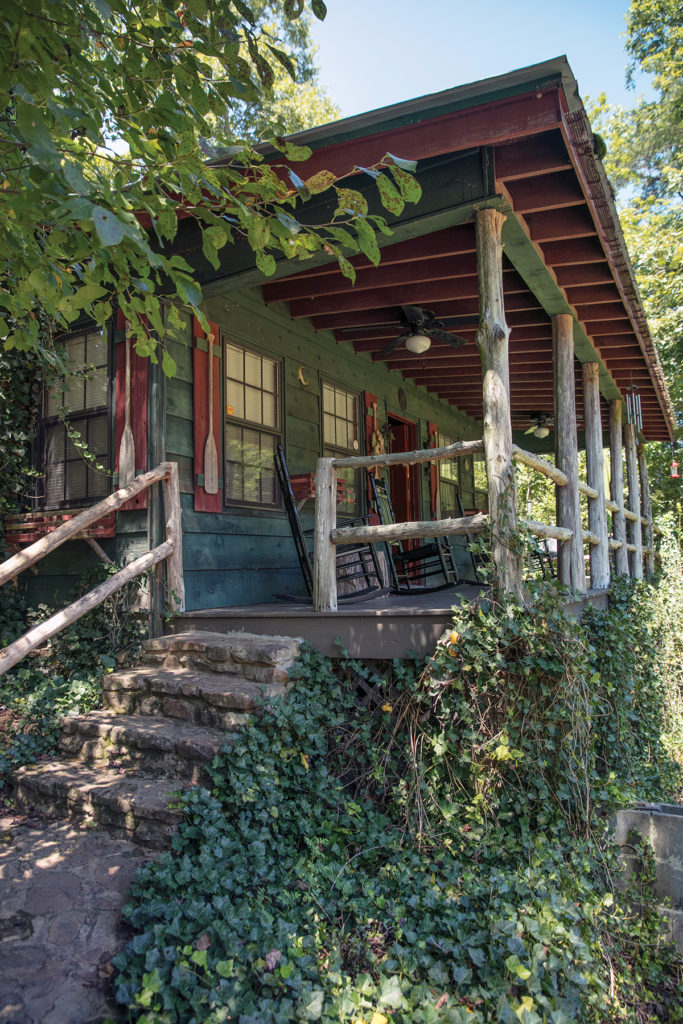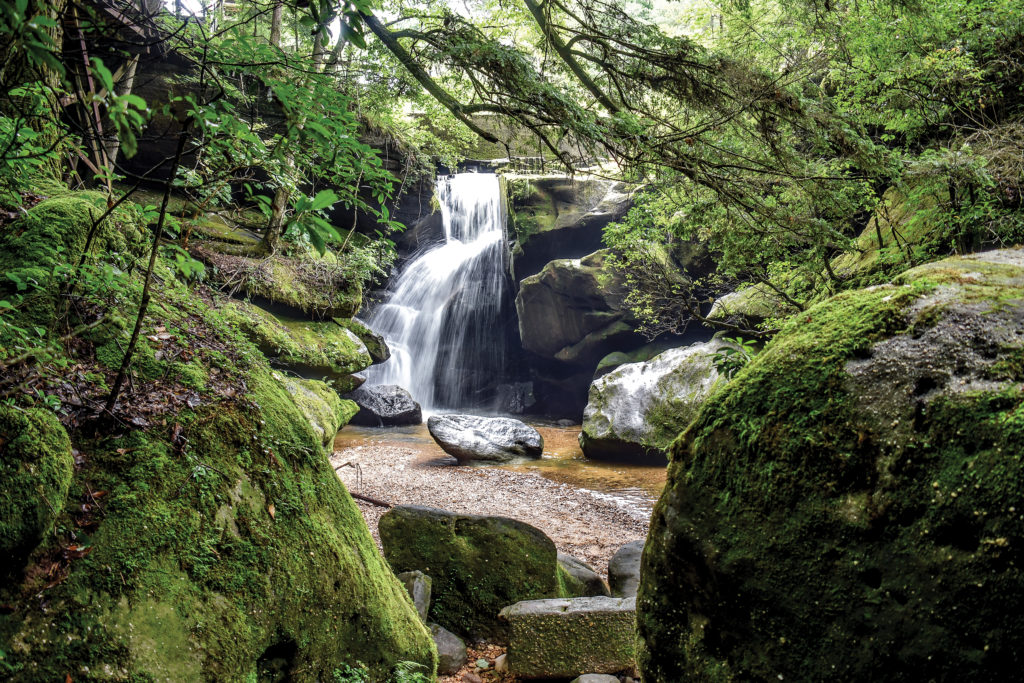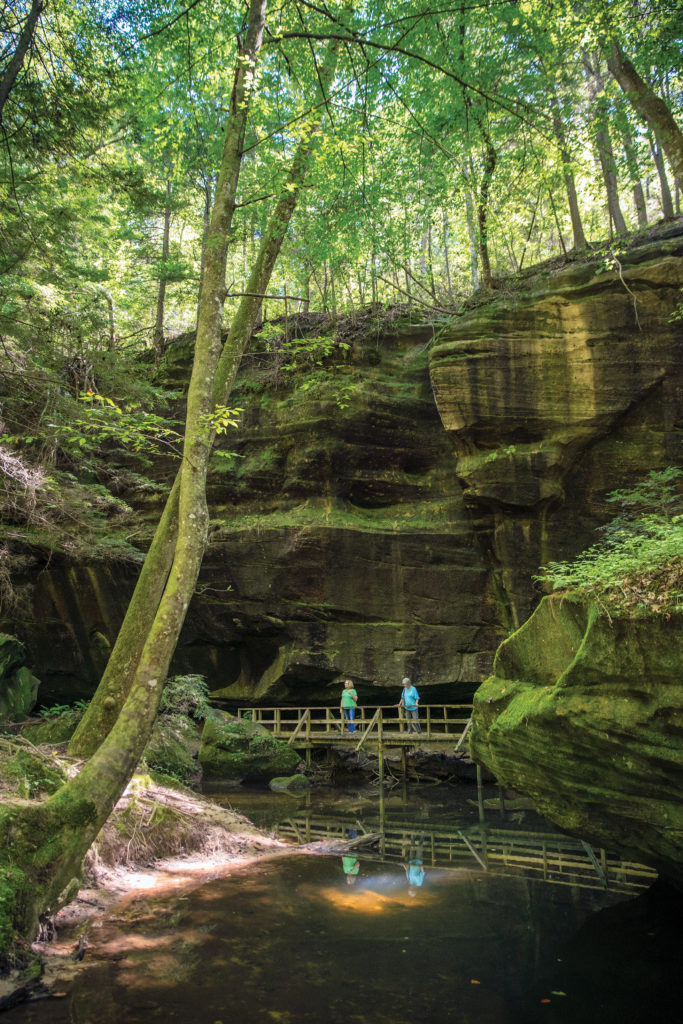Dismals Canyon is an ancient beauty

Story and Photos by Emmett Burnett
A classic movie line comes to mind when massive Franklin County gates swing open, revealing 85 acres of prehistoric beauty: “Welcome to Jurassic Park.” But it is not Jurassic Park. It is real and like nothing else in Alabama. Welcome to Dismals Canyon.
With the exception of designated areas, the sandstone sunken world is untouched by man. Trails weave through fern forests. Waterfalls cascade through house-size boulders. Grottos, caves, and bluffs are negotiated at every turn.

“It is truly a different world,” says wildlife biologist and tour guide Britney McCaffrey, about the land that time forgot. “It never ceases to amaze me.” She is not alone.
The state wonder off Highway 8 in Phil Campbell, Alabama impressed the Discovery Channel crews so much, they filmed an episode of “When Dinosaurs Roamed the Earth” in this very domain. “They added raptors,” McCaffrey recalls. “It looked very real.”
Dismals Canyon does not need movie effects to look real. It is real but at times hard to believe it is not an enchanted forest. “Visitors often comment, ‘I can’t believe this is here,’” McCaffrey says. “And it’s often followed by, ‘I can’t believe this is in Alabama.’”
First time explorer Greg Downs, from Tupelo, Mississippi, sums up the experience. “It is just beautiful, the canyon walls, the plants, everything. I can’t describe it.”
At times it feels like fantasy. Explorers gaze skyward at “rocks” wider than your house and three stories taller. Trees with attitude grow 10 feet tall before turning sideways to continue sprouting at 90-degree angles. Canyon visitors meander through labyrinths, negotiating sandstone fissures, wooden bridges, and gurgling streams.
And the insects? They glow.
Dismalites – not to be confused with fireflies – is the local name for North American orfelia fultoni – i.e., very rare glow bugs. They congregate on rock cavern walls emitting bright blue-green light. At night, it’s like looking up at the stars, at times so thick they form constellations. Others claim it is as if the caves are adorned with crawling jewels.

Photo by Chris Granger/Alabama Tourism Department
Awaiting your exploration
During the day, visitors explore at their own pace. For most people, the 1.5-mile walking trail can be accomplished in two hours. No experience is necessary. There is no rock climbing, but paths are on uneven terrain, so watch your step.
Side trails and maneuvering among sandstone fissures are downright fun. First-timer Joseph Glasgow of nearby Red Bay says, “One of my favorite parts of the walk was squeezing through two giant boulders. It was impressive now that I’m through.”
From the Canyon House, one descends the stairway outdoors into the Paleozoic Era. Light diffuses and dimly filters through lush treetop canopies shrouded in mystery. Even the name, “Dismals,” evokes mystery. Two theories prevail:
One: The name derives from Scotch-Irish settlers, after a spot in Scotland with the same title – Dismals.
Two: Visitors named it after some of the paths, dark, foreboding, and dismal.
Rainbow Falls contradicts the latter. When sunlight hits just right, the falls become a liquid prism, throwing rainbows on everything around it. The Dismals are dismal no more.

In the 1800s, area churches baptized members in a pool at the falls’ bottom. By contrast, 1800s outlaws also hid just down the path to evade capture.
Other bluffs, caves, and boulders are experienced throughout the journey. Grottos formed 10,000 years ago by earthquakes await exploration.
Temple Cave is one such beacon of investigation. Paleo Indians found shelter here centuries earlier. They used a large rock to grind corn. It is still here.

Dismals Canyon also houses sadness. Weeping Bluff has a nature-carved likeness of an Indian maiden’s face. Rain or shine, water streams from the bluff which legend says is canyon tears shed for Chickasaw Indians.
In 1838 U.S. troops rounded up the Chickasaw and held them captive in the canyon before herding them to Muscle Shoals, where they began the Trail of Tears. Over 90 percent perished during the journey. The bluff cries in their memory.
Over 350 types of flora and 27 species of trees including hemlock, tulip poplar, sweetgum, big leaf magnolia and beech are on the path. Ferns and moss carpet everything adding a green coating to towering stones.
A Champion Tree is here. At 130 feet tall and about 400 years old, it is one of largest known eastern hemlocks in the world.
The almost unblemished canyon owes its untouched existence to the massive stones that are more than majestic. They are guardians. Through decades, loggers tried to harvest the canyon’s old growth trees but reluctantly gave up. The terrain was too rugged and inaccessible for wood cutting machinery. Thank you, boulders. You rock.
In addition to walking trails, site offerings include cabins/camping, a country store and night tours (to see glowing dismalites). However, like everything else in the world, before visiting, check the site’s website – dismalscanyon.com – for the latest COVID-19 compliance status.
The canyon is not a national or state park, but privately owned. In 1975 it was designated a National Natural Landmark, administered by the National Park Service, U.S. Department of the Interior.
Allow at least a half day to visit and take your time. There is no need to hurry. Dismals Canyon will wait, just as it has for 300 million years.

Explore state’s natural beauty
Alabama is home to a rich landscape of geologic treasures, of which the Dismals Canyon is but one. During 2022, the National Parks Service is celebrating the International Year of Caves and Karst, making it the perfect time to get out and explore the terrain of our state by visiting a cavern, canyon, cave or karst (land formation formed by the dissolving of limestone) location near you.
And June 5-11 is National Cave Week, with some venues planning special events and discounts during that time. Among them is Majestic Caverns in Childersburg, formerly known as DeSoto Caverns which will kick off its name change celebration June 3-6 (see “Around Alabama,” page 29, for details).
More information is available at northalabama.org or alabama.travel.
A 1.5-mile hiking trail on the canyon floor follows a stream through boulders, past waterfalls and into a secret world filled with ferns and giant trees. Photo by Chris Granger/Alabama Tourism Department




